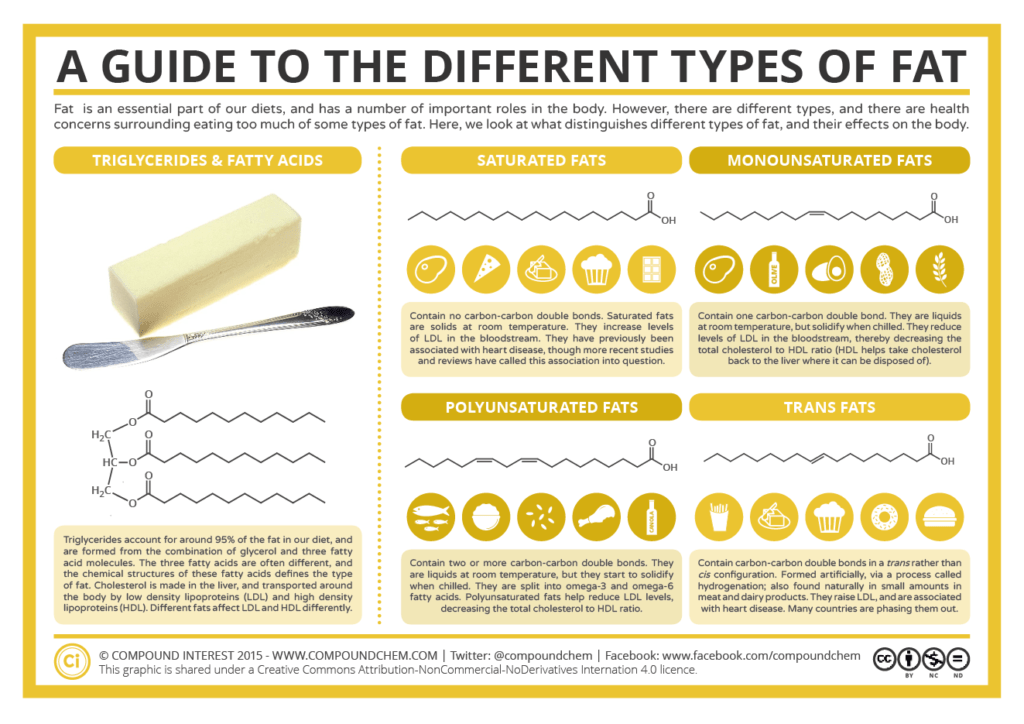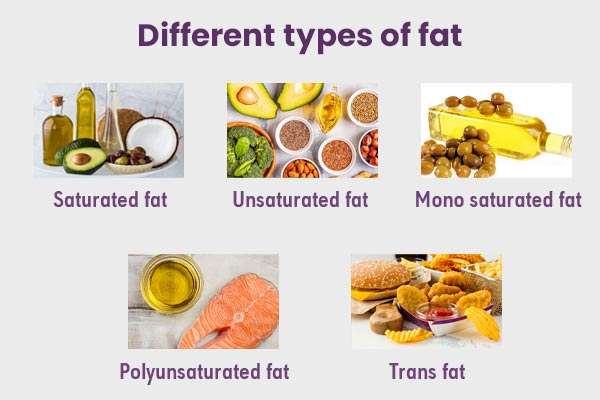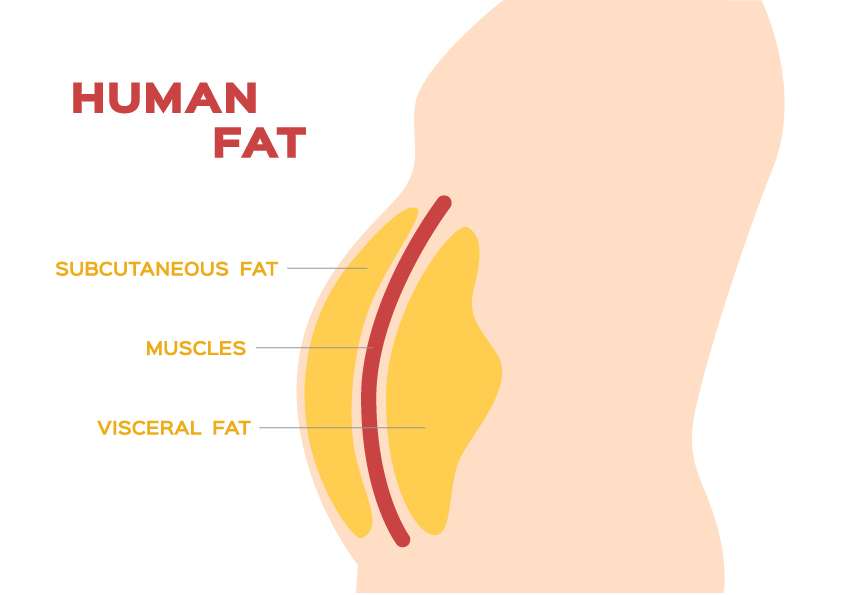So, when we hear the word “fat,” a lot of us automatically think of it as something negative. We often associate fat with weight gain and an unhealthy lifestyle. But did you know that there are actually different types of fat? Yeah, it’s not all just one big, bad thing. In fact, understanding the different types of fat can actually help us make healthier choices in our diet and lifestyle.
Alright, so let’s break it down. One type of fat that you’ve probably heard of is called visceral fat. This is the fat that accumulates around your internal organs, like your liver and intestines. It’s often referred to as “belly fat” and can increase your risk of developing health issues such as heart disease and diabetes. Not something you want hanging around.
On the other hand, we have subcutaneous fat. This is the fat that lies just beneath our skin and gives us that lovely layer of padding. We all have some level of subcutaneous fat, and it serves as insulation and protection for our organs. So, not all fat is bad, right? But excessive amounts of subcutaneous fat can lead to that muffin top or love handles we may want to get rid of.
So, as you can see, not all fat is created equal. In our upcoming article, we’ll dive deeper into the different types of fat and how they affect our bodies. Plus, we’ll give you some tips on how to maintain a healthy balance and lose any excess fat that may be lurking around. Trust me, it’s gonna be an eye-opening read. Stay tuned! Yes, there are different types of fat. In fact, not all fats are created equal. While some fats can have negative effects on your health, others are actually beneficial and necessary for your body to function properly. In this article, we will explore the different types of fat, their sources, health effects, recommended intake, and tips on incorporating them into your diet.

Saturated Fat
Saturated fat is a type of fat that is solid at room temperature. It is commonly found in animal products such as meat, whole milk, cheese, and butter. It is also found in some plant-based oils like coconut oil and palm oil.
Consuming excessive amounts of saturated fat can have negative health effects. It can raise your LDL (bad) cholesterol levels, which increases your risk of developing heart disease. Therefore, it is recommended to limit your intake of saturated fat to less than 10% of your total daily calories.
To reduce your saturated fat intake, you can opt for lean meats, low-fat dairy products, and limit the use of coconut oil and palm oil in cooking. It is also important to read food labels and choose products that are low in saturated fat.
Trans Fat
Trans fat is a type of fat that is formed when liquid oils are partially hydrogenated, making them more solid. It is commonly found in fried foods, baked goods, snack foods, and margarine.
Consuming trans fat is highly detrimental to your health. It raises your LDL (bad) cholesterol levels and lowers your HDL (good) cholesterol levels, increasing your risk of heart disease. It is recommended to avoid trans fat as much as possible.
To avoid trans fat, it is important to read food labels and avoid products that contain partially hydrogenated oils. Opting for whole foods and cooking meals at home using healthier oils like olive oil or canola oil can help reduce your trans fat intake.

Monounsaturated Fat
Monounsaturated fat is a type of fat that is liquid at room temperature but solidifies when refrigerated. It is commonly found in olive oil, avocados, nuts, and seeds.
Consuming monounsaturated fat in moderation can have several health benefits. It can help lower your LDL (bad) cholesterol levels and reduce your risk of heart disease. It is recommended to replace saturated and trans fats with monounsaturated fats in your diet.
To incorporate more monounsaturated fat in your diet, you can use olive oil as a cooking oil or salad dressing, add avocado to your sandwiches or salads, and snack on nuts and seeds.
Polyunsaturated Fat
Polyunsaturated fat is a type of fat that is liquid at room temperature and when refrigerated. It is commonly found in fatty fish, such as salmon and mackerel, as well as in walnuts, flaxseeds, and vegetable oils like soybean oil and sunflower oil.
Polyunsaturated fats contain essential fatty acids, such as omega-3 and omega-6 fatty acids, which are important for maintaining good health. Omega-3 fatty acids have been shown to reduce inflammation and lower the risk of heart disease.
Including sources of polyunsaturated fats in your diet, such as fatty fish and nuts, can provide you with these essential fatty acids. It is recommended to consume omega-3 fatty acids at least twice a week.

Good Fats vs. Bad Fats
Differentiating between healthy and unhealthy fats is important for maintaining good health. While saturated and trans fats are considered unhealthy fats, monounsaturated and polyunsaturated fats are considered good fats.
Unhealthy fats, like saturated and trans fats, can raise your LDL (bad) cholesterol levels and increase your risk of heart disease. On the other hand, healthy fats, like monounsaturated and polyunsaturated fats, can lower your LDL (bad) cholesterol levels and reduce your risk of heart disease.
In terms of weight management, unhealthy fats are more calorie-dense and can contribute to weight gain if consumed in excess. Good fats, on the other hand, can help you feel more satisfied and can be part of a balanced diet.
To choose the right fats, it is important to read food labels and choose products that are low in saturated and trans fats. Incorporating more sources of monounsaturated and polyunsaturated fats, such as avocados, nuts, seeds, and fatty fish, can contribute to a healthier diet.
Understanding Dietary Guidelines
Fats play an important role in a balanced diet. According to dietary guidelines, fats should contribute to around 20-35% of your total daily calories. It is important to consider individual needs and health conditions when determining the right amount of fat to consume.
When it comes to macronutrient distribution, it is recommended to focus on the quality of fats rather than just the quantity. Choosing healthier fats, like monounsaturated and polyunsaturated fats, over unhealthy fats, like saturated and trans fats, can have a positive impact on your health.
It is also important to balance your intake of fats with other nutrients, such as carbohydrates and protein, to ensure a well-rounded diet. A balanced diet that includes a variety of nutrient-dense foods is key to maintaining good health.

Effects of Fat on the Body
Fats serve several important functions in the body. They are a concentrated source of energy and can be stored in the body for later use. Fat also acts as insulation and protection for your organs, and it helps regulate hormones.
In addition, some vitamins, known as fat-soluble vitamins (A, D, E, and K), require fat for proper absorption. Including some healthy sources of fat in your meals can help ensure the absorption of these essential vitamins.
Conclusion
Understanding the different types of fat and their effects on your health is crucial for making informed decisions about your diet. While saturated and trans fats should be limited or avoided due to their negative health effects, monounsaturated and polyunsaturated fats are important for maintaining good health.
Incorporating healthier fats into your diet, such as olive oil, avocados, nuts, seeds, and fatty fish, can provide you with essential nutrients and help reduce your risk of heart disease. By choosing the right fats and maintaining a balanced diet, you can support your overall health and well-being.

